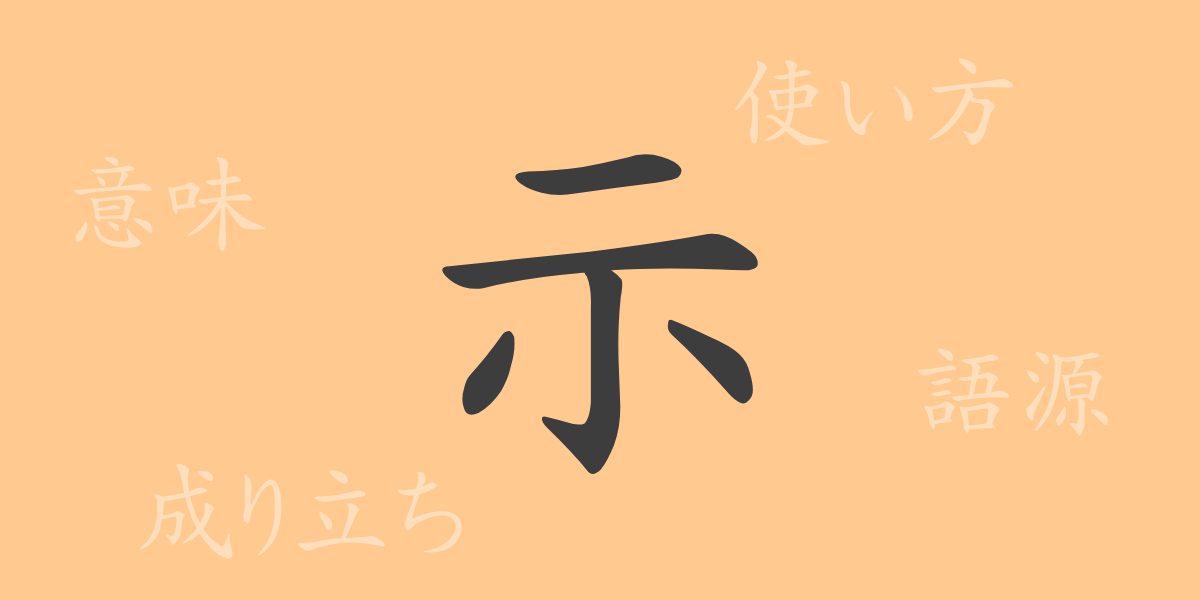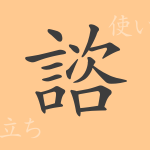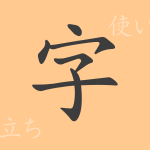The Japanese writing system is profound, with 常用漢字(じょうようかんじ) (common use kanji) frequently encountered in daily life. This article focuses on one such 常用漢字(じょうようかんじ), “示(しめ.す),” exploring its origins, meanings, uses, and various idioms and proverbs. By understanding the significance of this single character and its role in the Japanese language, we can deepen our appreciation for the nuances of the language.
Origins of 示(しめ.す) (Etymology)
The kanji “示(しめ.す)” can trace its origins back to ancient Chinese oracle bone script. The character symbolically depicted offerings placed on an altar, representing acts of prayer or wishes directed toward the heavens. Over time, its shape evolved into the modern “示(しめ.す),” yet its fundamental meaning has remained consistent since ancient times.
Meaning and Usage of 示(しめ.す)
The kanji “示(しめ.す)” has the kun’yomi (訓読み) readings “しめ.す” and “しめ.し,” which translate to “show” or “indicate.” It also appears in compounds like “表示(ひょうじ)” (indication), “指示(しじ)” (instruction), and “示唆(しさ)” (suggestion). Additionally, it can signify acts of praying or divine revelation. It is commonly used in contexts where something needs to be made clear or communicated.
Readings, Stroke Count, and Radical of 示(しめ.す)
As a frequently used kanji in Japanese, “示(しめ.す)” is characterized by the following attributes:
- Readings: On’yomi (音読み) readings are “ジ” and “シ,” while the kun’yomi (訓読み) readings are “しめ.す” and “しめ.し.”
- Stroke count: The kanji “示(しめ.す)” consists of 5 strokes.
- Radical: Its radical is “示(しめ.すへん),” which often appears in characters related to showing or indicating something.
Idioms, Phrases, and Proverbs Using 示(しめ.す)
There are numerous idioms, phrases, and proverbs that include the kanji “示(しめ.す).” Some examples include:
- 示唆(しさ): To hint or suggest.
- 指示(しじ): To instruct or command.
- 示談(じだん): Settlement through discussion or negotiation.
These expressions are essential elements in communication, often indicating the act of making something clear or conveying information.
Conclusion on 示(しめ.す)
The kanji “示(しめ.す)” is a fundamental character used to convey essential concepts in expression and communication. Evolving from its original depiction of offering and prayer, this character continues to play a significant role in modern Japanese. Each time you encounter “示(しめ.す)” in daily life, considering its historical and contextual meanings can lead to new insights and a deeper understanding of the language.

























